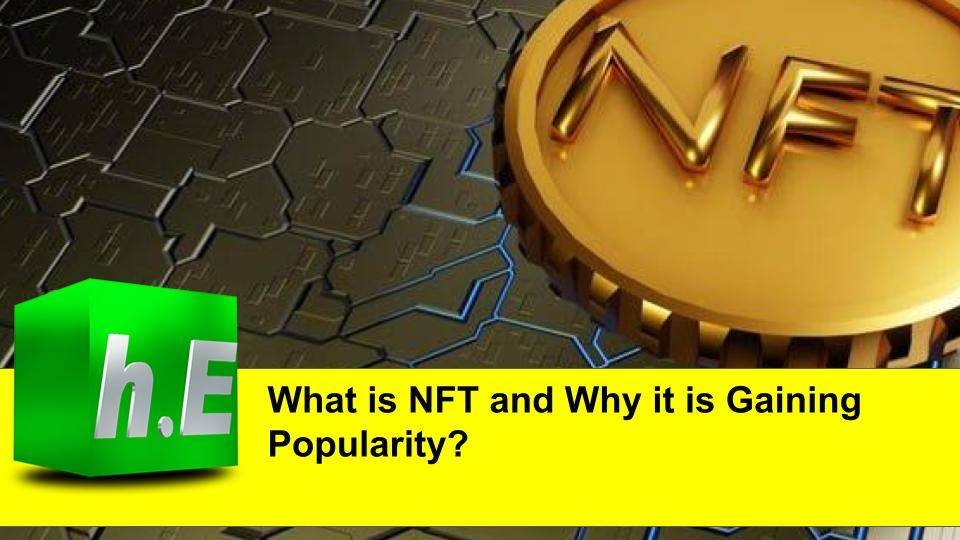In present times, there are plenty of cryptocurrencies like Bitcoin, Ethereum, etc. which are being hailed as the digital answer to currency, the Non-fungible Tokens are seen as the digital answer to collectibles.
NFT is a type of digital asset that gained popularity in March this year after NFT artworks sold for millions of dollars. Later, musicians such as the Kings of Leon rock group also embraced them for their latest album. Even though its popularity is increasing, many economists think it is all a bubble that will burst soon.
An NFT is a digital certificate, aka cryptographic token, that lives on a blockchain. Individuals can purchase authentic and credible digital goods, mostly images, videos, and animations, using NFT.
NFTs are unique and keep a record of an individual’s transaction history. Though the buyer may not physically possess Grimes’ digital art, he/she has the proprietary rights to the particular piece of art, ratified by the blockchain network.
The digital asset comes with a license that allows the buyer to put them on social media, a digital marketplace, a game world, or a virtual museum.
What are NFTs?
NFTs are cryptographic tokens – much like a cryptocurrency – that are recorded on a blockchain and can be used to prove the authenticity, ownership, and provenance of anything – physical or non-physical – such as artwork, collectible cards, or real estate, for example, in much the same way as a blockchain can be used to settle financial transactions or track elements in a supply chain.
“Non-fungible” implies the token is unique and cannot be duplicated or swapped for anything else (unlike individual bitcoins, for example, which are “fungible”).
How do NFTs work?
NFTs are basically part of blockchain networks. Most of them are part of the Ethereum blockchain network. Yep, before you ask, Ethereum is a cryptocurrency, but the blockchain network that supports these ETH coins is known as the Ethereum blockchain network.
In addition to Ethereum, other blockchains like Flow and Tezos also support NFTs.
NFTs makes it possible to assign or claim ownership of any unique piece of digital data and anyone can review the blockchain which acts as a public ledger to track and verify the ownership of the NFT.
In spite of this, it is possible for the person or entity that owns the NFT to remain pseudonymous.
There are a lot of things that could get tokenized into NFTs. An NFT could represent digital art in the form of images, gifs, music, videos, and other collectibles.

It could also represent real-world items like legal documents, signatures, invoices, tickets to real-world events, or even the deeds to a car.
NFTs: Breaking into the world of Crypto
NFT’s are becoming a focus in global crypto attention. An NFT is a special kind of cryptographic token that represents a particular thing — something unique implying that an NFT isn’t mutually interchangeable by their particular specification in the manner that various crypto things like Monero works.
Their value remains constant and can be traded with one another. NFTs can be applied in the creation of verifiable digital scarcity. They’re particularly vital for all applications that need specific digital assets like digital art, digital collectibles, and in-game assets.
NFT’s aren’t new in the digital world; the first NFT-like token was launched back in 2012 when colored coins, also referred to as Bitcoin.
Today, the most common example of an NFT-like token is ERC721 which is operating on an Ethereum network. Enjoy later developed another type of NFT known as ERC 1155 operating on the same Ethereum network — developed as an advanced standard for the definition of video game tokens.
Who is using NFTs?
Beeple, a conceptual 3D artist whose real name is Mike Winkelman, became the third wealthiest living artist after an NFT containing his work sold for $69.3 million (€58.9 million) at auction in March, smashing all records for previous NFT sales.
Last month, Kings of Leon became the first band to issue NFTs. They are selling three different tokens: one with their new album, another with live show perks like front row tickets for life, while a third contains exclusive audiovisual art.
Stark Trek actor William Shatner sold 90,000 virtual trading cards as NFTs last year for $1 (€0.85) each. Electronic musician Grimes sold $6 million (€5.1 million) worth of her digital art last month, including a video clip featuring winged cherubs floating in pastel dreamscapes that went for $389,000 (€331,000).
Clips of NBA star LeBron James dunking are selling for as much as $225,000 (€213,000). Actress Lindsey Lohan sold an image of her face. You can also buy virtual land in video games, or meme characters like Nyan Cat.
What can you do with your NFTs?
Different NFTs offer you different usage rights. Other than selling it and making a tidy profit, the biggest thing you could do with your NFT is probably brag about owning it (a very reasonable use case, if you ask me). Some NFTs also act as tickets to online social clubs.
In a lot of cases, the NFT token is distinguished from the actual art associated with the NFT. You’d want to look closely when you’re buying your NFTs to see what right you actually get.
We have always emphasized the importance of having a good website for your company because it can act as your best tool for marketing and sales. A poorly designed website can repulse people from your business and can cause you to lose customers before you even have them. Get in touch with HyperEffects to work on creating, enhancing, and making the website of your company more user-friendly.

